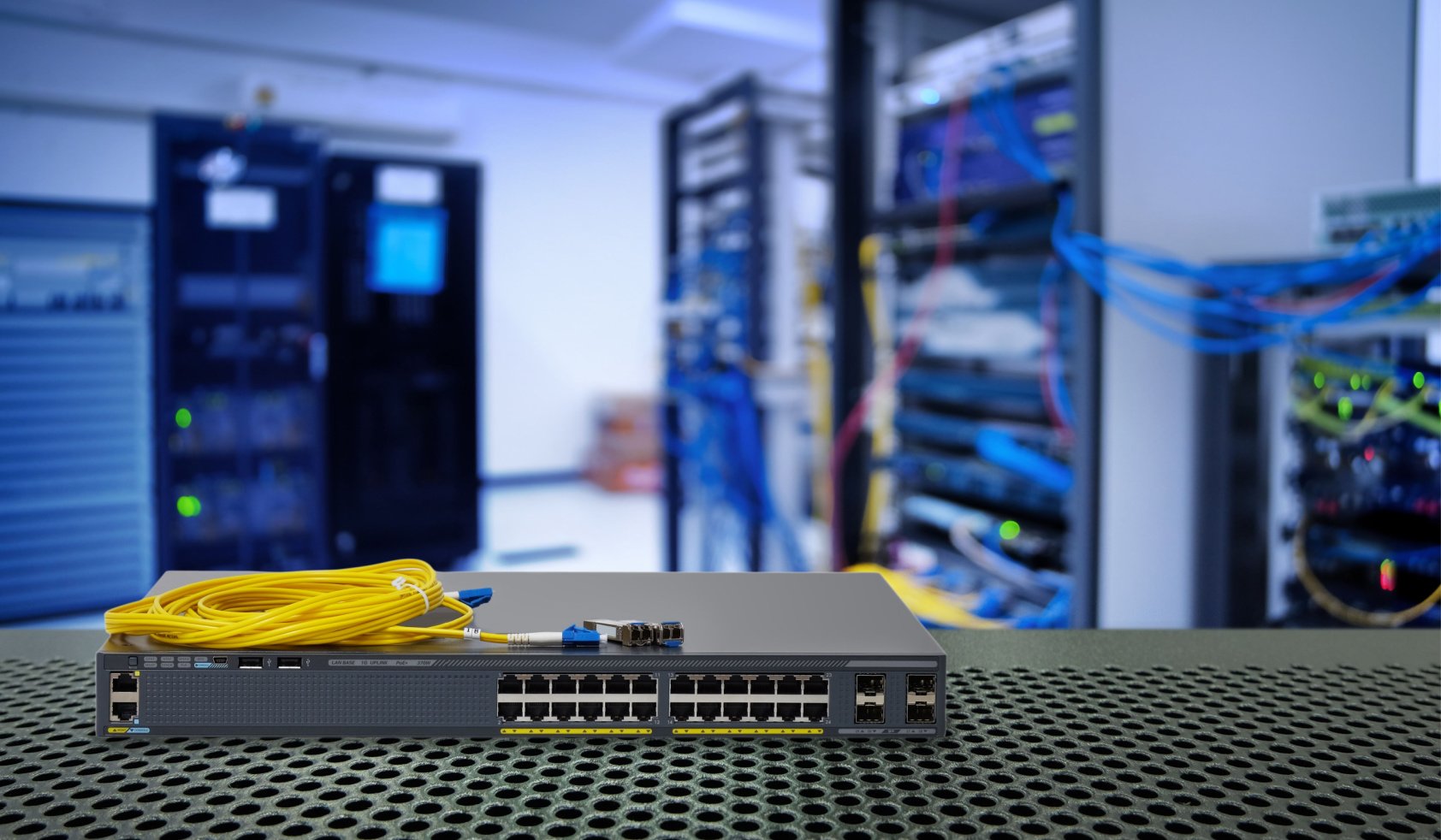Harnessing the power of Power over Ethernet (PoE) technology can bring several benefits to your network, including improved growth and maintenance capabilities. However, selecting the right PoE switch requires careful consideration of factors such as projected organizational growth and device usage.
In this article, we'll delve into the considerations that will guide you in choosing the ideal PoE switch for your needs. Whether you're just starting with PoE or an experienced Integrator or Network Administrator, there's something here for you.
Understanding PoE Technology
PoE enables Ethernet cables to carry electrical current, powering network appliances and devices. Unshielded twisted pair (UTP) cabling, like Category 5 cable, is commonly used to deliver direct current power. With PoE, the need for power cords, supplies, and outlets is eliminated.
By 1999, PoE was standardized to ensure uniform operations for powered network hardware and appliances on Ethernet connectivity. Since then, PoE standards have evolved, leading to increased compatibility with non-PoE appliances and devices, higher power levels, and enhancements to the standard Category 5 cable for better power delivery.
The 30-watt PoE, known as IEEE802.3af or PoE+ PoE, was designed to support a broad range of network appliances and devices. The highest power rating for PoE devices today is 90 watts, also known as IEEE802.3bt Type 4 or PoE++.
A 90-watt Type 4 PoE++ can power network appliances and devices such as motion sensors, security video cameras and monitors, and even refrigerators. Category 5 network cable is the minimum requirement for Type 3 and 4 PoE. Improved cabling requirements, including Category 8 network cables, are available and compatible with both Type 3 and Type 4 PoE.
PoE products include copper to fiber optic media converters, fiber optic media converters, and Ethernet switches. PoE media converters facilitate the interconnection of systems using copper-based cables and fiber optic cables or allow fiber-to-fiber conversion.
PoE switches bundle digital data – including raw data or payload, metadata like an IP address, and routing information – into a packet and transfer them to the intended destinations.
Selecting a PoE Switch
Planning for future organizational growth and device usage is crucial when choosing the right PoE switch.
Key factors to assess before selecting a PoE switch include the existing network system and bandwidth, current network appliances and IoT, locations of network appliances and fringe devices and IoT, the facility’s power configurations, and planned upgrades and additions to the network system.
These considerations will determine the type of PoE switch and device requirements such as data rate, power consumption, port density, benefits of managed and unmanaged switches, and the need for converters/fiber optic transmission for longer distances and increased bandwidth.
Data Rate
Your existing network speed or anticipated network speed upgrade plays a vital role in determining the right PoE switch. Specific PoE switches support standard Ethernet network speeds (10 Base T networks), fast Ethernet (10 Base T and 100 Base T networks), gigabit Ethernet (1000 Base T networks), and greater (1/10G).
Power Consumption
The total power consumption of all powered network appliances and devices should be within the operational capacity of PoE switches, including the power consumed by the PoE switch itself. Depending on the number of ports and type of PoE switch, all powered network appliances and devices should be simultaneously connected and powered.
The right PoE switch can provide uninterrupted data transmission without power or signal loss. Power budget depletion and signal loss can be avoided by careful calculation of the power budget. Comnet by acre’s PoE Power Supply Budget Calculation is available to help you calculate your power budget.
Port Density
The size or potential growth of an organization’s network should help in anticipating port density. PoE switches commonly offer 8, 12, 16, 24, and 48 ports or more for Ethernet cabling and connectivity. PoE switches with 8 to 16 ports typically meet the requirements of small or home networks. PoE switches with 24, 48, or more ports can meet large and diverse network system needs of data centers, corporate organizations, and institutions.
Managed or Unmanaged PoE Switches
A managed switch allows for user configuration and includes switch management operations. Managed switches provide configuration and control over ports, bridges, and network protocols.
An unmanaged switch comes pre-configured for plug-and-play operations and will automatically identify system operations and hardware components. An unmanaged switch does not require user configuration and typically cannot be modified.
Both managed and unmanaged switches can incorporate PoE. However, users can modify the configuration of managed switches remotely, from a management console, or via network interface from a web browser with the advantage of PoE.
Fiber Optic Transmission
The maximum length and effectivity of UTP cabling is 100 meters. Fiber optic cabling allows for longer distance and greater bandwidth capacity over UTP cabling, with the use of PoE media converters.
Fiber optic transmission bridges the distance and bandwidth requirements. PoE media converters convert fiber optic to copper transmission and send data over PoE UTP cabling to network appliances and devices.
Need More Assistance in Choosing Your PoE Switch?
The Design Center at comnet by acre is here to provide one-on-one technical pre-sale telephone assistance. This service is free for customers interested in using comnet by acre products in their designs. Trust us to guide you in selecting the perfect PoE switch for your needs.





